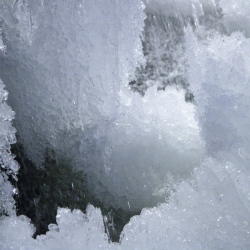
With new space missions come new and improved capabilities. For those interested in what’s happening to the ice on Planet Earth, we have two ventures this year that are going to make a major contribution to our understanding. Ice is the "climate canary". The loss, and the rate of that loss, tell us something about how global warming is progressing.
In the Arctic, the most visible sign is the decline of sea-ice, which, measured at its minimum extent over the ocean in September, is reducing by about 14% per decade.
At the other pole, the marine floes look much the same as they did in the earliest satellite imagery from the 1960s, but land ice is in a negative phase.
Something on the order of 160 billion tonnes are being lost annually, with most of that mass going from the west of the White Continent.
The two 2018 missions of interest that will pick up these trends and extend them into the future are Grace Follow-On and IceSat-2.
The former is the successor to the highly successful US-German gravity spacecraft that operated from 2002 to 2017.
Grace is actually a pair of satellites that pursue each other around the globe in formation with a separation of 220km.
They accelerate and decelerate in turn as they pass over variations in the local gravity field. It is a very small effect – a change in distance equivalent to the thickness of a human hair – but discernible to the microwave ranging instrumentation carried on the satellites.
Because the gravity variations are a function of changes in mass, the pair are able, literally, to weigh the ice sheets sitting below them on land as they pass overhead.
Its from the first Grace mission’s observations, for example, that we know Greenland is currently losing about 280 billion tonnes of ice to the ocean every year.
It’s a significant contribution to the 3.4mm per annum rise in global sea levels.
